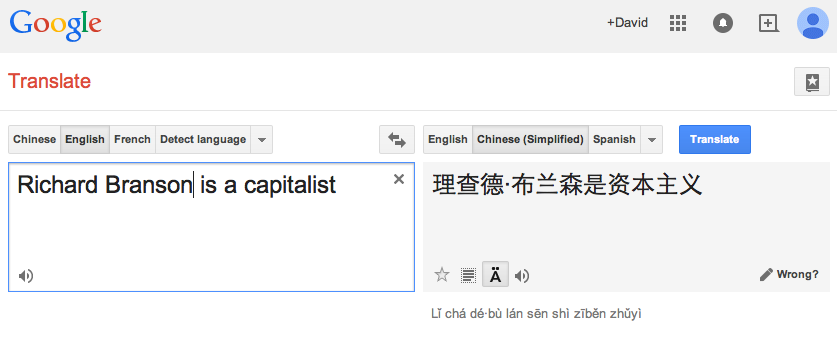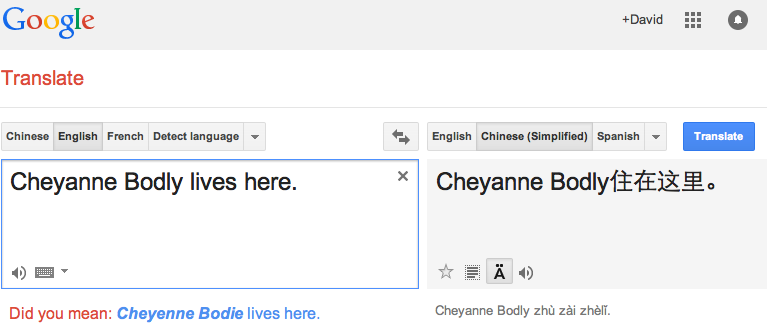The MandarWeb Website: The Characters in Names page
Section 15. Characters in Names
The Chinese use their characters in the names of people, companies and organizations, and places. Because their characters mostly have meaning in themselves, the usage is a little different to that in English, where the alphabet is essentially a sound-rendering system.
People names -- family names and personal names
The Chinese have the normal arrangement of a family name plus (usually two) personal names. The surname is normally a single character, written first. It is normally the father's surname.
In 2015, the President of China is Xi Jinping (习近平). "Xi" is the surname, Jinping or Jin-Ping his personal name. The convention in the West is to write the surname first, followed by personal names run together or hyphenated, without tones.
Chinese surnames are usually characters which have meaning in everyday speech, as well as being surnames. The current President's surname, "xi2" or "习", can mean to practice or study.
According to Wikipedia, "The conception of China as consisting of "the old 100 families" (老百姓, Lǎobǎixìng) is an ancient and traditional one, the most notable tally being the Song-era Hundred Family Surnames. Even today, the number of surnames in China is a little over 4000, while the year 2000 US census found the number of American surnames held by at least 100 people to be more than 150,000, and more than 6.2 million surnames altogether.
The Chinese expression "Some Zhang, some Li" (simplified Chinese: 张三李四; Pinyin: Zhāng Sān Lǐ Sì) is used to mean "anyone" or "everyone", but the most common surnames are currently Wang in mainland China and Chen or Chan in Taiwan. A commonly cited factoid from the 1990 edition of the Guinness Book of World Records estimated that Zhang was the most common surname in the world, but no comprehensive information from China was available at the time and more recent editions have not repeated the claim. However, Zhang Wei (张伟) is the most common full name in mainland China."
Chinese forenames (usually two, occasionally just one) always mean something, usually complimentary -- they are normal characters chosen from the current vocabulary. Chen DanLin, 陈丹琳, is a girl with the fairly common surname Chen (chen2, can mean arrange or exhibit) and the personal name dan1-lin2, 丹 琳, where dan1 can mean red or vermilion, and lin2 means gem or jade. Men's names often reflect masculine attributes such as "strength".
Of course Chinese characters used in names do not have capitals or other distinguishing marks, and in a text string they must be picked out from the context. As almost all the characters have their own meaning, whether individually or grouped as words, this can be difficult for a Westerner.
When Western names occur in Chinese text, some common examples may have accepted equivalents in Pinyin and Hanzi, while many will be rendered in English or the original source language. Google Translate is probably the best place to look for such equivalents.

Don't take the (very approximately phonetic) rendering of "Richard Branson" as "Li3-cha2-de2-bu4-lan2-sen1" as the only possible version. Some Western forenames are fairly well established -- "David" is usually rendered as da4-wei4 (大 卫) or da4-wei2 (大 为).
More unusual names are usually left in latin script.

Company and organization names
Chinese company and organization names are formed as elsewhere, but frequently shortened or reduced to acronyms. Western-based companies operating in China choose names which are very rough transliterations, using characters which have positive connotations. Usually, the original meaning of the characters is lost.
McDonalds is mai4-dang1-lao2, 麦 当 劳, "wheat-manage-work". Coca-Cola is ke3-kou3-ke3-le4, 可 口 可 乐, "can-mouth-can-happy". Ikea is yi2-jia1 , 宜 家, "suitable house" -- perhaps chosen more for meaning than sound. Once again, Google Translate is a good reference point.

Names of places
There are two different aspects here, firstly how names of places outside China are rendered in Chinese characters, and second how places within China appear as characters.
As usual, Google Translate is a good place to see how the names of foreign places are treated in characters.

If the places are not well known, their names will be left in English, as for personal names.
Chinese atlases of the world, or maps of foreign parts, will usually have places named in Chinese and in the foreign language or transliterated into English.

Chinese atlases of China will naturally have the place names shown in characters. Some also have the place names shown in Pinyin, and have an alphabetical index at the end.
Google Earth and Google Maps views of places in China may show place-names in Pinyin also. Here is a Google Maps view of the area around Guilin in southern China.

Some place-names and people-names of very old standing may still exist in older transliteration systems. Beijing and Peking are the same place, but Peking is the name under an older transliteration (but the airport code for Beijing is still PEK).
Some more remote parts of China are predominantly known by their local name in a non-Chinese language. Urumqi, the capital of the vast XinJiang area of northwest China, is transliterated in official documents as wu1-lu3-mu4-qi2.

Urumqi's railway station has its name up in Arabic and Chinese scripts.
Return to the MandarWeb Home Page
(previous version 1.04, on Web 2008 Oct 22, see http://www.aoi.com.au/mandarin/ ).
Version 2.01, 2015 Mar 24.








